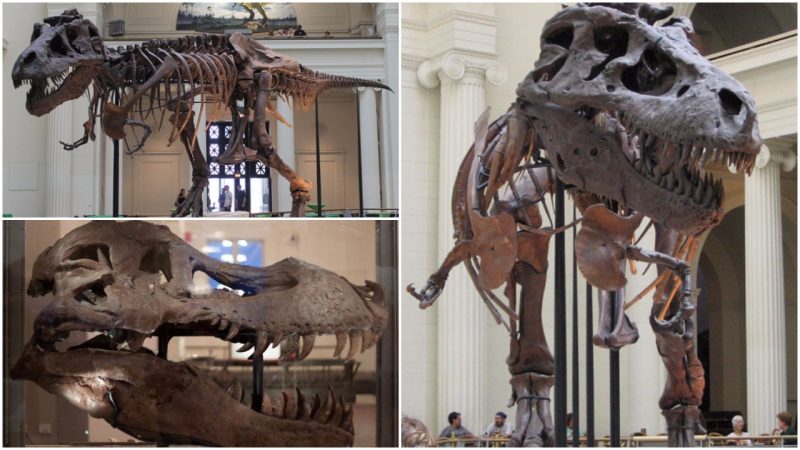If you ever wish to see the fossils of the largest and most complete Tyrannosaurus rex specimen ever found, plan a trip to Chicago and head for the Field Museum of Natural History. There you can see Sue, the nickname for FMNH-PR 2081 – the biggest, and at the same time, best preserved T-rex fossil ever found. Over 90% of what was left from Sue was recovered in bulk. The fossil was discovered during the summer of 1990 by paleontologist Sue Hendrickson, who it was named after.
Sue has a length of 12.3 meters and stands at an astonishing 3.66 meters tall at the hips. It is estimated that it had weighed around 6.4 to 10.2 metric tons when it was alive. Sue was discovered at the Cheyenne River Indian Reservation, in the area of western South Dakota, and near to the city of Faith. The discovery followed after a 1990 expedition by the Black Hills Institute, who were looking for fossils in the area.
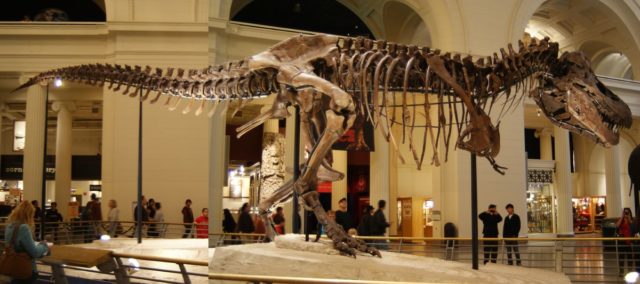
The discovery of Sue actually happened on the last day of the expedition. The team had already found Edmontosaurus bones and were ready to leave when they noticed a flat tire on their truck. Part of the team went to repair the truck when Sue Hendrickson decided to give one final look around some nearby cliffs that nobody had checked before.
As Hendrickson was walking down the base of the cliff, she noticed small pieces of bone, which were the first hints that this could be a significant discovery. She went on to inspect where the bones originated from and noticed a larger bone structure protruding from the wall of the cliff. Sue reported her discovery to the rest of the team and the conclusion was that these were most probably the bones of a T-Rex, thanks to their distinctive contour and texture.
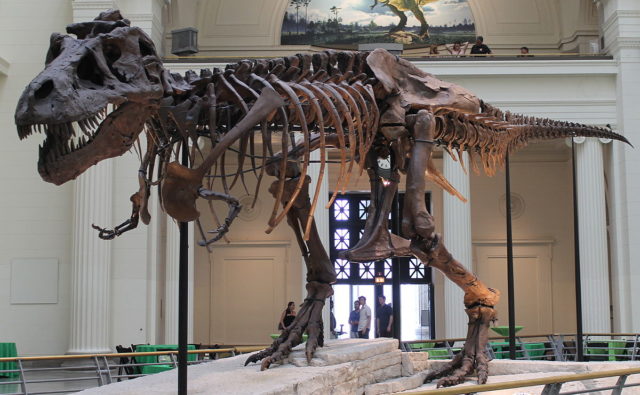
Half of the expedition group had to depart but Sue remained with the other half and continued the examination of the site. Previous T-Rex skeleton discoveries would usually miss over half of the content, but as the group was able to uncover larger and larger bones, it was clear that much of the dinosaur had been well preserved.
According to scientists, the well-preserved condition of the specimen is due to it being covered by mud and water soon after its death, which prevented other animals feeding on the corpse and the bones. In addition, the bones had been mingled together by rushing water.
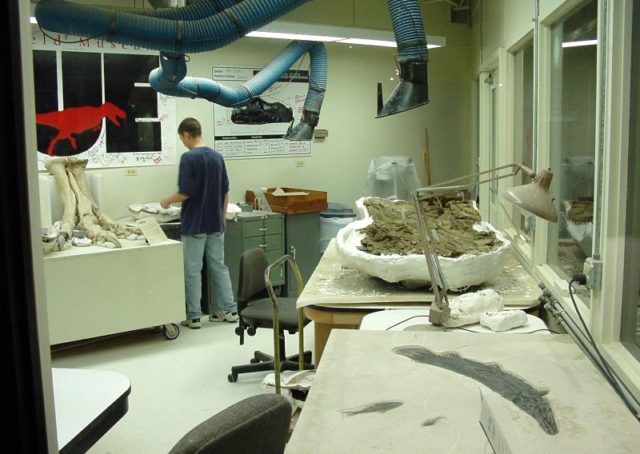
When found, Sue had its hip bones above the skull, and the leg bones intertwined with the ribs. Regardless of that, all bones were in excellent shape and condition which was also surprising. Most of its teeth were still intact as well.
Sue is also the most expensive fossil ever purchased
Very soon after its discovery, a huge dispute regarding legal ownership of the fossil followed throughout most of the 1990’s. It turned out that the Black Hills Institute had only paid for permission from the owner of the land, Maurice Williams, to remove and clean the fossil for a later sale. Williams, a member of the Sioux tribe, had taken this case to court to prove his legal ownership.
More drama had followed as the site has been raided in 1992 by the FBI and the South Dakota National Safeguard, who transferred the fossil remains to the South Dakota School of Mines and Technology. The remains were returned to Williams only after the court had decreed in his favor.
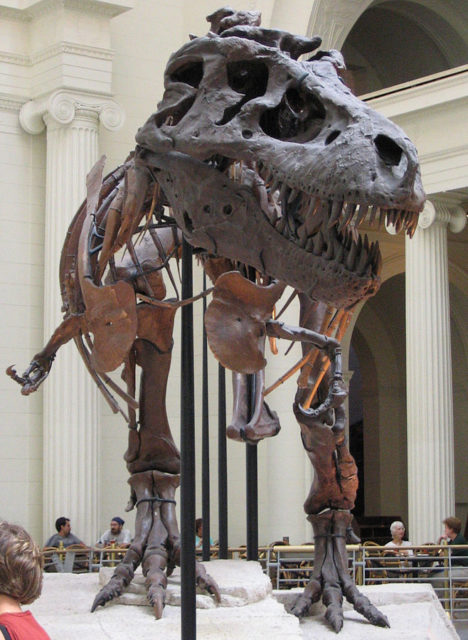
After that, Williams made a contract with Sotheby’s to auction the remains of the fossil. For a while, everybody was worried that the fossil would end up in some private collection, hidden and unavailable to the public. It was at this point when the Field Museum in Chicago recognized the opportunity and looked for funding support to purchase the remains. Sponsors of the museum featured major corporations like Walt Disney Parks and Resorts and McDonald’s; hence, the Field Museum had the highest bid at the auction, making Sue possibly the most expensive fossil ever, with a purchase worth US $7.6 million. It was transferred to the facilities of the Field Museum in Chicago in the later months of 1997.
Sue’s skull was examined with a CT scanner normally used to inspect space shuttle parts
Work on Sue followed at two labs simultaneously, one at the Field Museum, and the other at the Animal Kingdom in Disney World, Orlando. Thousands of visitors were able to observe the preparation of Sue’s bones through a glass window in both the labs. The preparation phase was slow and experts had to carefully remove all the rock, or “matrix” from the bones, to bring the skeleton together.
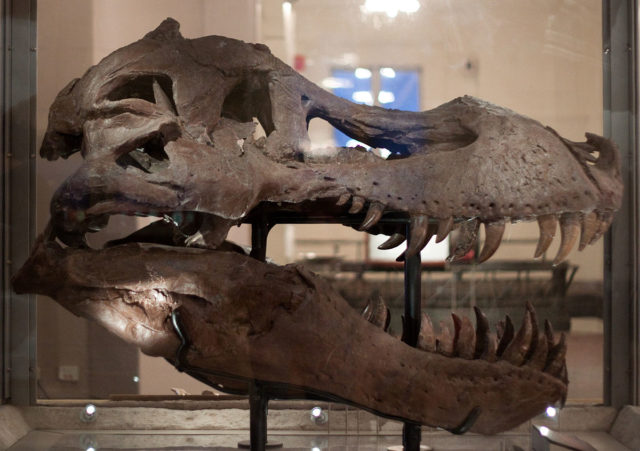
Some of the fossils’ bones had never been discovered, so preparators had yet another task to reconstruct models of the missing bones from plastic in order to complete the skeleton. The model bones were colored purplish so that visitors could observe which of the bones were real and which were constructed.
When Sue was finally reconstructed, the museum’s paleontologists were able to then begin the study of the skeleton. In addition to photographing and studying each bone, the team also used CT scanning of selected bones. The skull remained a challenge as it was unfit for any CT scanner. Consequently, the Boeing’s Rocketdyne Lab in California had allowed the museum to use their huge CT scanner which was normally used to inspect space shuttle parts.
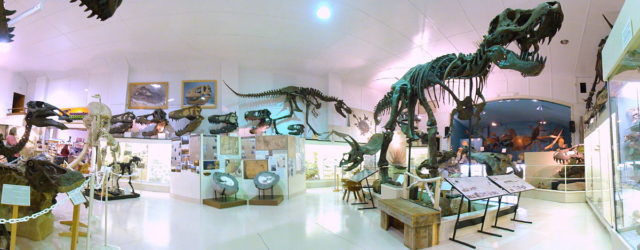
Close examination of the bones had revealed that Sue was 18 years old at the time of death.
Sue remains the biggest T-Rex known to date, whilst Trix is the name of the oldest one, found in 2013, and estimated to be over 30 years old.
